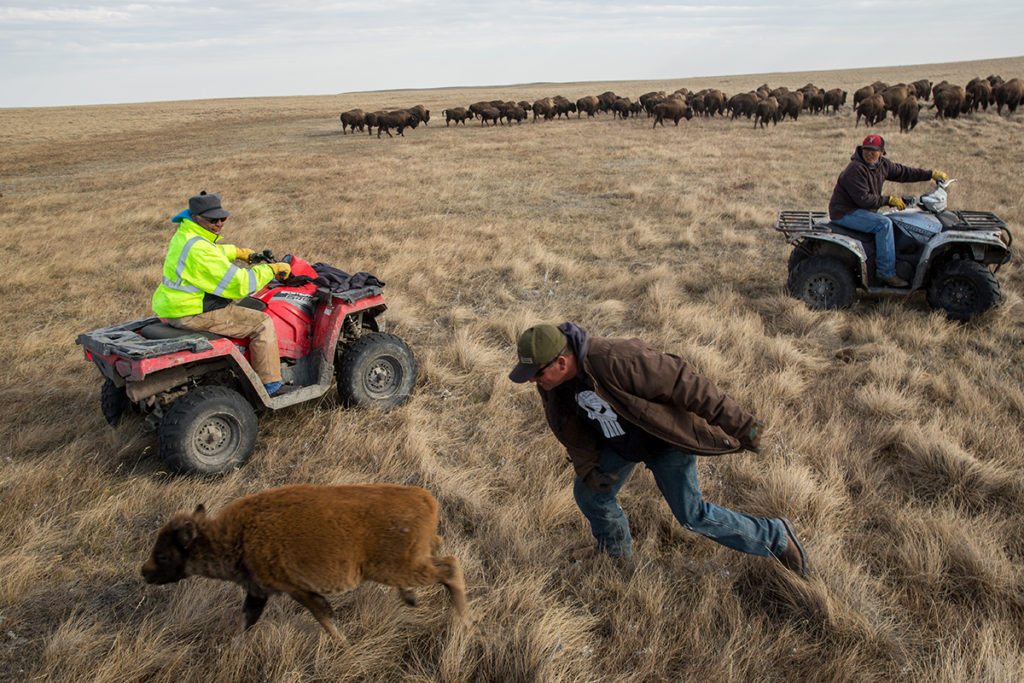
When she was in college, Louise Johns decided to combine her love of animals—she was a competitive horseback rider for many years—with a career in photography. Her latest project, “Buffalo Renaissance,” captures the centuries-old bond between the Blackfoot Confederacy tribes (which include the Blackfeet in Montana and three tribes in Alberta, Canada) and the North American bison. It also depicts the ongoing fight to regain authority from the federal government to manage the bison population. —Jayne Ross
The Blackfeet men in this photograph are responsible for the bison 24/7, every day of the year, despite the crazy winter weather along the Rocky Mountain front. I joined them as they drove the animals from summer pasture near the mountains to winter pasture farther out on the prairie. They could see that this calf was tired and falling behind the rest of the herd, so they decided to give it a ride. Their job is hard, but I’ve noticed moments of joy and humor, too. The relationship with bison also looks very different today than it did to their ancestors—herds have to be managed now, requiring much more human interference. But these men and women are dedicated to the animals, and I have heard many say that their time spent with the herd touches them in a deep way and helps them understand who they are.
The story of the bison in North America runs parallel to the story of Plains Indians. The species was not only their source of sustenance but also their way of life, the cornerstone of their spiritual ceremonies, rituals, and culture. The Blackfoot Confederacy tribes dream of eventually restoring a transboundary herd of bison in Canada and the United States, dissolving artificial borders.
I collaborated with a Blackfeet writer on a magazine story, and I am doing an exhibit with a Blackfeet artist that will be on display this fall. I see my work as simply a conduit for Native voices, and the most rewarding part of this project has been meeting people who have welcomed me into their lives and embraced me both as a friend and as someone who cares deeply about their story.


